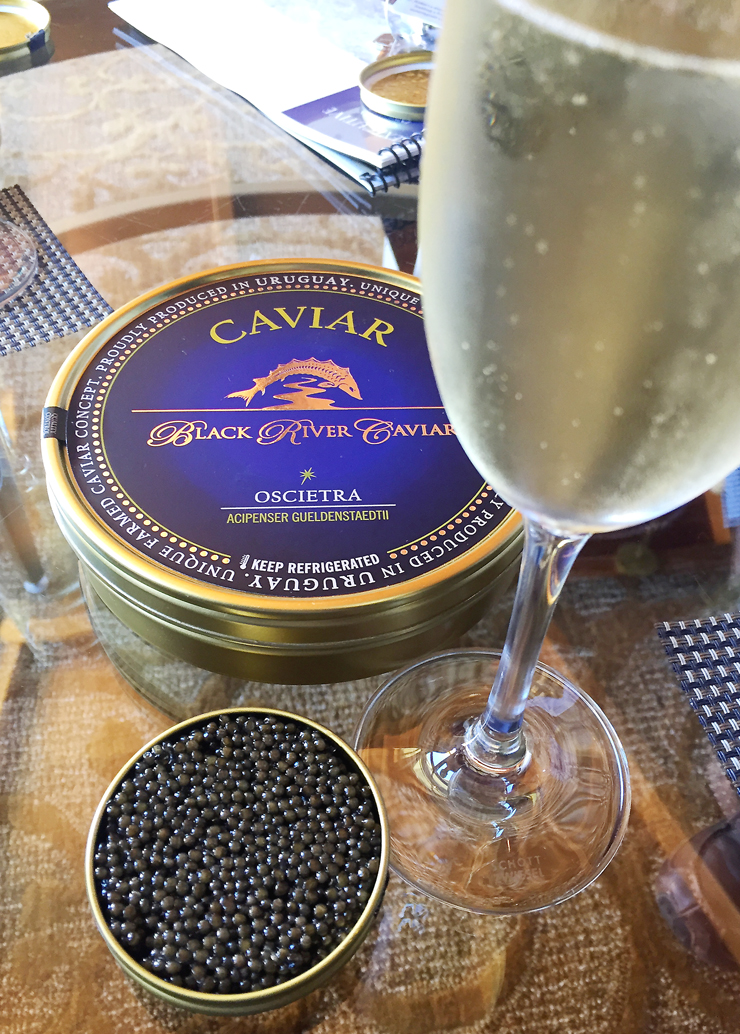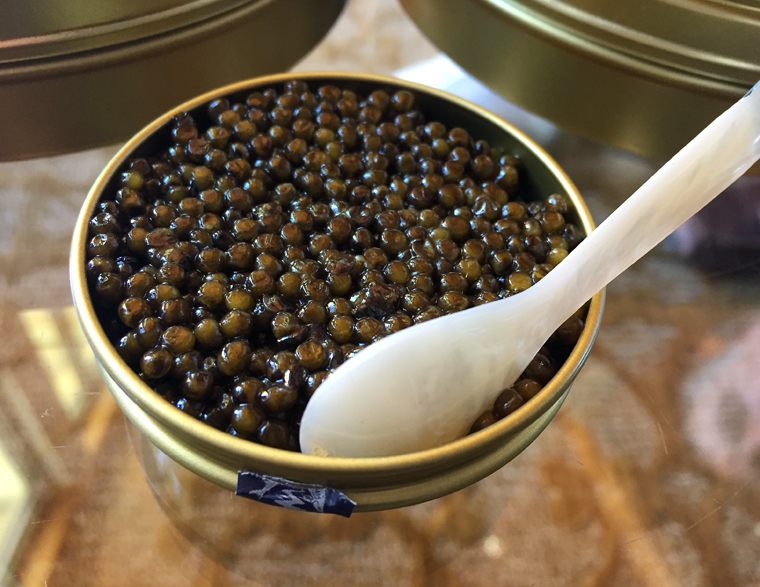Black River Caviar — Just In Time For National Caviar Day
National Key Lime Pie Day. National Corn Chip Day. National Hummus Day.
Mentions of such food observance days on social media happen so frequently that I typically just roll my eyes.
However, when I was recently invited to a one-on-one private tasting just in time for National Caviar Day, well, how could I refuse? Yes, you see what gets my attention.
But Black River Caviar merits it.
After all, it’s the first farmed caviar in the Southern Hemisphere.
And it’s a favorite of U.S. chefs such as Michael Mina, Douglas Keane, Michael Tusk and Walter Manzke.
The company was founded in Uruguay in 1996 by Walter Alcade, who was in the shipping business and often found himself talking to members of the Russian fleet, who would pass through the capital city of Montevideo. When they told him that they thought caviar could be produced in Uruguay, Alcade decided to take on the challenge.
He created a sturgeon hatchery in man-made Lake Baygorria in the northern part of the country. It takes six to eight years for sturgeon to mature before their eggs can be harvested, says Graham Gaspard, president of Black River Caviar. They are sieved, salted, then sealed in tins. The caviar ages for 60 days before it is released for sale. Black Caviar now produces 4 tons of caviar annually.
Nothing goes to waste, either. The flesh of the fish is exported for food. And the tails and heads go into pet food that’s made by another company Alcade started.
The Kaluga caviar (a hybrid of Beluga and a river sturgeon) was smooth and buttery. The Oscietra (from sturgeon of Russian origin) may have been smaller in size, but it was bigger in taste — super buttery tasting with a lingering complex finish not unlike a triple cream brie.
“You judge by sight, smell and taste,” Gaspard says. “The caviar should not be dull. Nor should it have an off or fishy smell. You should get the scent of the sea. When the salinity is lower — which is what we aim for — you pick up more nuttiness and other nuances.”
Unfortunately, Gaspard didn’t have any of the Golden Oscietra to taste. These eggs, which really are golden in color, are very rare, making up only one-tenth of Black Caviar’s production. They are usually produced by older sturgeon. But there’s no way of telling if you have struck gold until you harvest each fish.
Of course, caviar carries a luxury price tag. The Black River Kaluga and Oscietra (sold on the company’s Web site) can be had for $225 and $165 respectively for a 50-gram tin.
It’s a good thing National Caviar Day only comes around once a year. It’ll give me 365 days to save up enough to enjoy a taste again.



I thought National Caviar Day was Dec. 31? So confused. LOL
Ben: Not sure which calendar you are looking at, but it is definitely July 18. Celebrate with some top-notch caviar.